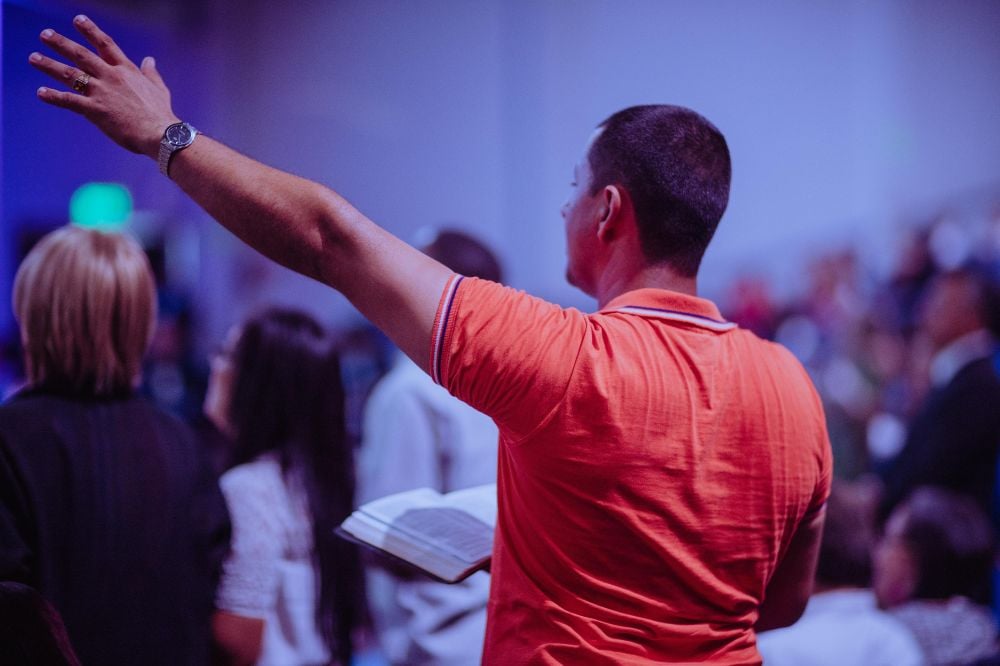How To Plan A Church Or Faith-Based Retreat
Before we go into detail on planning a church retreat, did you know that faith-based retreats date back some 700 years? The practice was created by the Spanish priest St. Ignatius of Loyola, who established the first retreats and wrote about it in his book Spiritual Exercises as a way to discern the will of God in people’s lives.
Today his words still hold true. Church or faith-based retreats are a useful way for members of congregations to withdraw from daily life and renew and refresh their religious beliefs.
With the careful execution of the six essential faith-based retreat planning steps described below, leaders and organizers are set to host successful events that inspire and unite church members in meaningful ways.
Download a FREE Copy of Our eBook!
The Five Key Elements of Planning Successful Retreats
A comprehensive guide with tips on timeline planning, marketing, budgeting/pricing, questions to ask your retreat center, information on liability waivers, and more.

Six Steps To Planning A Church Retreat
1. Decide On A Purpose And Theme
Knowing what you want to achieve is an important starting point for planning a faith-based retreat. It ensures that the retreat stays focused and participants leave feeling inspired with practical solutions for when they return to their normal lives.
The purpose of your gathering, whether it be to reinforce religious values, principles, and scriptural understanding - will inform your retreat theme.
Other purposes around which to build a theme are to build a community, provide a place and time for study and reflection, or simply serve as a sanctuary for churchgoers to reconnect with their God.
Themes For Planning A Church Retreat:
- A specific biblical passage
- A sacred season
- A defined spiritual practice or mission
- Spiritual gifts
- Pilgrimage
- Personal transformation
- The joy of the Gospel
- Spiritual Exercises of St Ignatius
2. Research Your Target Audience
Faith-based retreats are created for a range of people of different ages and demographics. Your retreat should be tailored accordingly.
Consider for example activities and themes for a youth group and older adults.
Youth groups would need more structured activities such as leadership exercises, discussion groups, games, and other fun youth activities.
Older members will be looking for contemplative prayer, spirituality, and reflection activities.
Intergenerational groups would need a combination of both, meaning a lot more planning on your side. Retreats can also be women- or men-only or be exclusively couple’s retreats.

Once you understand your audience, you can start planning church retreat activities, determine your budget, and decide when and for how long the retreat will be held.
3. Structure The Retreat Days
In terms of the duration of your retreat, it should be structured according to the program the leaders want to run, and what they aim to cover. This will guide you in terms of what kind of activities to organize and how many of them you need to plan to fill the days in meaningful ways.
When structuring each day, decide on start and end times, when meals will be served, and plan retreat activities to slot in between.
Activities can include talks, Q&A sessions, prayer time, meditation, group chats, Bible study, workshops, worship, and a sunrise or sundown service.
Also, ensure that there is enough alone time for participants to rest, explore their surroundings, or engage in some form of physical activity.
Provide enough resources such as books, religious scripture, videos, music and musical instruments, poetry, art materials, and paper. This allows people to expand on what they’ve learned and express themselves in a meaningful and memorable way.
Importantly, don’t over plan. A retreat is meant to be a time to relax and reflect on the theme and the participants.
4. Choose A Retreat Location And Center
The best location for a church retreat is one in a beautiful locale in a quiet, safe area or at a site that holds religious/faith significance.

An ideal retreat location should provide ample, comfortable overnight stay facilities, including serviced rooms, air conditioning or heating, meals that suit diets of all types, and facilities for the disabled.
Ensure that there are spaces available for both indoor and outdoor activities and that there is access to large meeting spaces.
In case you haven’t seen it, the Retreat Center Directory is a helpful tool for finding retreats with the exact facilities you need in any location.
5. Finalize Your Budget
Your budget will significantly impact the size and duration of a retreat. A retreat planning budget template is a helpful tool that can help you to organize all your potential costs. This may include:
- Variable costs depend on the size of your group. These include expenditures related to transportation, catering, accommodation, and supplies.
- Operational costs such as sales and marketing campaigns, insurance policies, and host/facilitator expenses.
- Percentage-driven costs. These include participant payment fees, vendor transaction fees, discounts or promotions, referral and sales commissions, and tips.
6. Set Up A Booking And Payment System
Once the budget is finalized and the pricing is determined, it’s time to set up a booking and payment system. This will allow you to easily accept payments from attendees and make payments to vendors.
There are many paid and free online booking and payment software platforms to choose from. As a retreat planner, there are several factors to keep in mind when selecting a suitable system for your business:

- Platform fees - does it work on a monthly subscription or a percentage of your transactions?
- Credit card processing fees - high fees result in a lower take-home margin
- Payment types and currencies available - clients love flexible options that offer a variety of payment methods
- Transaction security - will people feel safe interacting with and transacting on the platform?
- Set up time - is it easy to get your payment system into play or do you need to call in an expert to get started?
- Are there extra features available, for example, booking pages, payment plans, and an admin dashboard?
With many of the top booking and payment systems, you can create interactive, shareable booking pages that showcase your itineraries, even without a website.
A flexible booking and payment solution specifically designed for faith-based travel will ensure that all organizational needs in terms of planning a church retreat are met.
Do you want to explore how WeTravel's booking and payment solution can help you?
We can help you plan and organize an effective faith-based retreat!

More importantly, you can give your clients the booking experience they deserve when signing up for your retreat.
- Ensure that all church members are signed up to the email list and send out newsletters to inform and remind them of the retreat.
- Advertise on tourism and local news websites/platforms in the area as well as close to the retreat location.

Last Words On Planning A Church Retreat
It is no small feat planning a church retreat - it takes a lot of preparation and forethought to pull a successful event together.
For more guidance, use this timeline planner and checklist for religious tour and retreat organizers.
Whether you are a spiritual leader or a tour operator who has been approached to plan a custom religious tour for a specific group, the step-by-step instructions listed above to plan a church or faith-based retreat will help you to be more organized so that you can focus on the real goals and purpose of the event.
New resources, straight to your inbox
We’re committed to your privacy. WeTravel uses the information you provide to us to contact you about our relevant content, products, and services. You may unsubscribe at any time.



